Decorating the Front Entrance of HOTEL THE MITSUI KYOTO
Kajiimiya Gate Registered as a Tangible Cultural Property (Structure)
July 19, 2021
Mitsui Fudosan Co., Ltd.
Mitsui Fudosan Resort Management Co., Ltd.
Tokyo, Japan, July 19, 2021 - Mitsui Fudosan Co., Ltd., a leading global real estate company headquartered in Tokyo, and Mitsui Fudosan Resort Management Co., Ltd. (Chuo-ku, Tokyo; President: Wataru Sudo) hereby announce that the Kajiimiya Gate at the entrance to HOTEL THE MITSUI KYOTO (Location: Nakagyo-ku, Kyoto; General Manager: Manabu Kusui) has been registered as a Tangible Cultural Property (structure).
Registered tangible cultural properties (structures) are historical buildings that are 50 years or older and have achieved a certain level of recognition, such as for their contributions to the national historical landscape. This is the second Mitsui Fudosan Group facility to be registered as a cultural asset, following the Mitsui Main Building (Location: Chuo-ku, Tokyo) being recognized as an Important Cultural Property.
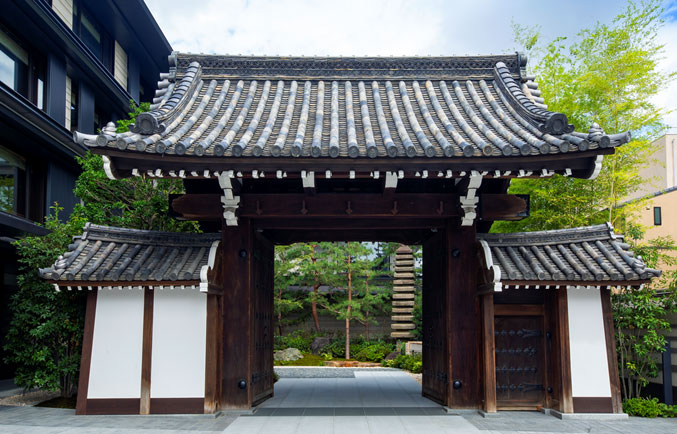
Kajiimiya Gate
■ Overview of the Kajiimiya* Gate
The Kajiimiya Gate was built as the gate to the Kajiimiya Court, an area near Kawaramachi and Imadegawa in Kyoto in 1703 (Genroku 16), and relocated here in 1935 (Showa 10) to be the gate to the entrance of the Kitake residence, the executive branch of the Mitsui family, that stood on this spot for more than 250 years. The Kajiimiya Gate with a history of over 300 years and carried on in the area from the time of the Mitsui family has been completely restored by carpenters specializing in temples and resurrected to decorate the front entrance of HOTEL THE MITSUI KYOTO in November 2020.
Up until now, the Kajiimiya Gate has been repeatedly restored every 30 to 50 years, but the current restoration has broken down the gate and its sides into approx. 1,000 parts, each and every one of which being carefully examined. Damaged and decayed parts were restored and replaced with new materials when necessary, after which the gate was built in its current location. The gate not only uses old parts, but also interweaves modern techniques when necessary in pursuit of a vision appropriate for the current age. To give an example, more than 50% of the roof tiles were actually reused, but instead of connecting the roof materials and tiles with soil as had been done in the past, wire was used to update safety and earthquake resistance. While retaining over 80% of the exterior parts, there has been a definite structural evolution and the gate has been restored for the modern age while retaining its deeply tasteful atmosphere.
* Kajiimiya: Refers to the current Sanzen-in Temple in Ohara in northern Kyoto.
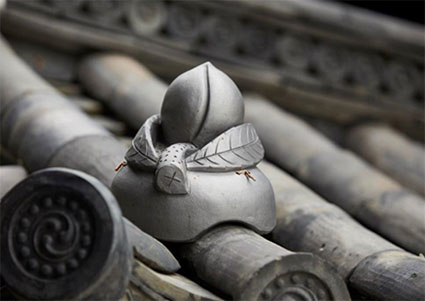
A peach-shaped roof tile
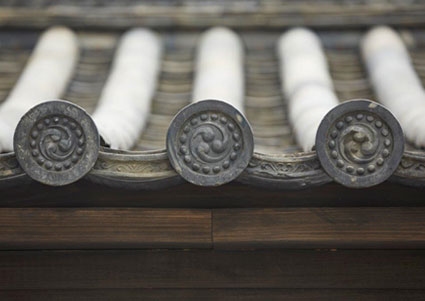
Roof tiles
■ Registration Process
With an ancient luster produced by the passage of over 300 years and a majestic appearance exhibiting a gateway spanning approx. 4.5 m between its pillars and a height of approx. 7.4 m, thus Mitsui Fudosan believes the Kajiimiya Gate was registered as a Tangible Cultural Property due to its contribution to the landscape of the city of Kyoto and value as an important cultural structure. Mitsui Fudosan also believes the gate’s presence in its current location for more than 80 years and appreciation as a historical building that conveys the region’s history had a major influence.
Mitsui Fudosan is proud of the recognition afforded to its initiatives under the theme of heritage and rebirth, which have been carved into the land associated with the Mitsui family and have revived the memory of a bygone time in a new age. HOTEL THE MITSUI KYOTO will continue to value the unique beauty of Japan and provide customers from within and outside the country with special experiences and relaxation as a Japanese luxury hotel through meticulous care and sophisticated behavior.
■ Cultural Property Registration System
The Japanese government’s cultural property registration system was introduced for the Minister of Education, Culture, Sports, Science and Technology to register architectural and other structural properties which are in particular need of measures for protection and utilization as Registered Tangible Cultural Properties, following an amendment to the Law for the Protection of Cultural Properties enacted on October 1, 1996. To become a registered Tangible Cultural Property, a building must be at least 50 years old and meet the following standards:
- Structure that contributes to the national historical landscape
- Structure that represents a formative design
- Structure that cannot be easily recreated
■ HOTEL THE MITSUI KYOTO
Designed under the brand concept - EMBRACING JAPAN’S BEAUTY - HOTEL THE MITSUI KYOTO opened in November 2020 and welcomes all of its guests with heartwarming spaces and service, while respecting the memory of the times of the executive branch of the Mitsui family (Kitake), who made their home on this site for over 250 years, as well as the traditions and culture of Kyoto that have been cultivated over generations. The hotel promises guests not only accommodation, but memories that will stay with them through their culinary experiences in our garden-front restaurants and healing and relaxation in the spa area, which uses a natural hot spring. The hotel aims to take advantage of the Kajiimiya Gate being registered as a Tangible Cultural Property to foster even greater affinity with the people of the local community.
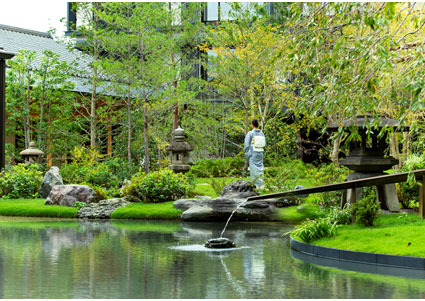
Garden
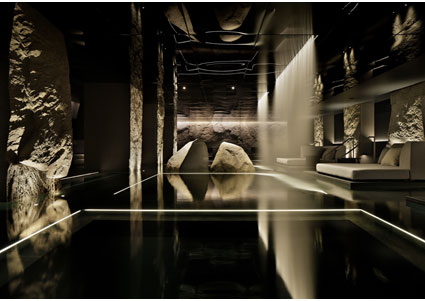
Thermal spring
■ Outline of HOTEL THE MITSUI KYOTO
| Hotel Name | HOTEL THE MITSUI KYOTO |
|---|---|
| Opening | November 3, 2020 |
| Location | 284 Nijoaburanokoji-cho, Aburano-koji St. Nijo-sagaru, Nakagyo-ku, Kyoto |
| Ground Area of Project Site | Approx. 7,500 m2 (Approx. 81,000 ft2) |
| Access | On the subway Tozai Line, alight at Nijojo-mae Station (3min walk) On the subway Karasuma Line, alight at Karasuma Oike Station (10min walk) |
| No. of Guestrooms | 161 rooms (including 22 suites) |
| Areas of Guestrooms by Type | 43m2 – 213m2 |
| Food/Beverage Facilities | TOKI (Gastronomy Teppan) – 44 seats FORNI (Italian Cuisine) – 107 seats (including 18 terrace seats) THE GARDEN BAR (Bar) – 44 seats (including 6 terrace seats) SHIKI NO MA (traditional Japanese restaurant): 16 seats |
| Spa | Thermal Spring (natural hot spring pool facility, swimwear required) Two Private Onsen bathing facilities Treatment Rooms |
| Other Facilities | Fitness Gym, etc |
| General Manager | Manabu Kusui |
| Operating Company | Mitsui Fudosan Resort Management Co., Ltd.* |
| Official website | https://www.hotelthemitsui.com |
*Mitsui Fudosan Resort Management Co., Ltd. is a wholly owned subsidiary of Mitsui Fudosan Co., Ltd. and the owner/operator of HOTEL THE MITSUI KYOTO in addition to Halekulani Okinawa (Opened July 26, 2019; 360 guest rooms) and Four Seasons Hotel Tokyo Otemachi (Opening September 1, 2020; 190 guest rooms).
■ Mitsui Fudosan Group’s contribution to SDGs
https://www.mitsuifudosan.co.jp/english/corporate/esg_csr/
The Mitsui Fudosan Group aims for a society that enriches both people and the planet under the principles of coexist in harmony with society, link diverse values and achieve a sustainable society, and advances business with an awareness of the environment (E), society (S) and governance (G), thus promoting ESG management. By further accelerating its ESG management, the Group will realize Society 5.0, which the Japanese government has been advocating, and contribute significantly to achieving the SDGs.
*The initiatives covered in this press release are contributing to mainly one of the UN's SDGs
| Goal 11 | Sustainable Cities and Communities |
|---|



























